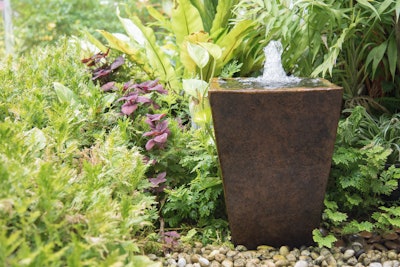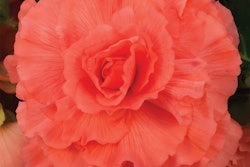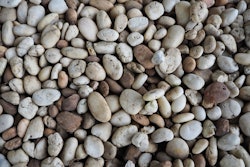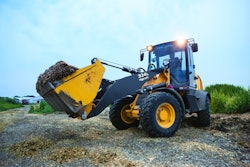
When this need arises, customers will seek out a quiet space in their landscape that allows them peace, tranquility and often times seclusion. To help give your customers the ideal quiet space, take a look at a few tips you can incorporate and create for them to give them silence and solitude when it’s needed most.
Barriers and indented spaces
When working to control or suppress surrounding noises in an area, keep in mind that sound travels via waves that typically rise upward when originating at ground level. Adding in taller barriers can help moderate these noises, and plants will also refract, absorb and deflect noises. It’s also beneficial to note that having desirable white noise can work to mask undesirable noises.
According to the Georgia Forestry Commission, unwanted noise can be reduced by as much as 50 percent when combining all three of these tactics.
When adding in or creating barriers in a landscape, the overarching goal is to create a tall, wedge-shaped barrier that will direct the sound waves upward. Having a solid wall in place will work wonders in moderating noises, and harder surfaces like stucco, concrete, wood, brick or stone will act as sound reflectors, bouncing sounds up and back toward the source.
On the opposite end, when sound waves come in contact with flexible surfaces, they will vibrate more while absorbing more sound.
If your customers don’t have the means to have barriers installed or just aren’t fans of the way the design will look in the end, have no fear.
Carving out a quiet space in the landscape can be just as beneficial to those seeking a silent sanctuary as adding in tall barriers, and it also has the added benefit of sound-deadening soil around it.
Berms and retaining walls with an ample helping of plant life can create an intimate and peaceful space, and it can allow customers to weigh in on the type of plants they would like to see around their landscape.
Adding in a series of berms that are 2- to 4-foot high between your customer’s lawn and the sound source can be an incredibly cost-effective method for drowning out unwanted sounds, or consider incorporating a series of panels of various heights throughout the area along with the berms and barriers.
Plants and white noise
When choosing plants for your customer’s area, be sure to keep sound suppression in mind. Wider, dense plants like evergreens have proven to be the most effective type for keeping noise at bay year-round.
Plants are able to diffuse and absorb sounds with their leaves, bark, twigs and branches, which means when they are paired with a well-placed barrier wall the effects are ideal.
Adding in raised beds packed with plants is one method you can use to add some height to a space quickly, and it can come in handy for customers on a budget or when municipality codes limit how tall your structures can be.
Along with suppressing unwanted noise, the natural movement of wind-blown plants creates its own sound that can be soothing and add to white noise.
If your customers are interested in adding in just a bit more white noise to the mix, don’t be afraid to add in multiple layers to mute or draw the attention away from unwanted noises.
Having something as simple as a small water feature or a flowing stream with multiple miniature waterfalls can add the soothing sounds of running water to the space. To find more ideas on how to incorporate water features into smaller landscapes, click here.
Hanging a few wind chimes, flags or small bells can create a playful melody when coming in contact with the wind, while also adding in a few eye-catching decorations around the yard.











